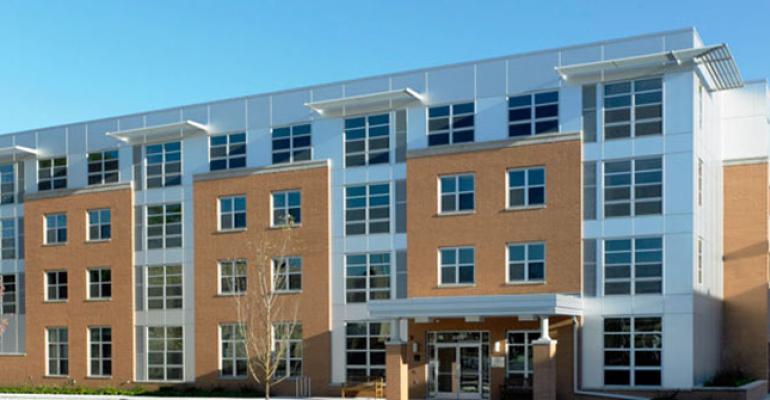(Bloomberg)—Sears Roebuck & Co. broke ground on a million-square-foot campus on Chicago’s West Side in 1905. For the next seven decades, the 14-story clock tower served as headquarters for a retail empire that became synonymous with middle-class America. In 1973, the corporate giant, which once sold everything from pliers to entire kit Sears Catalog Homes, decamped for an eponymous 1,450-foot skyscraper that was once the tallest building in the world.
The years since then, however, have not been as kind.
Now part of Sears Holdings Corp., the company has since merged with Kmart. It has shed billions of dollars in sales, accumulated a mountain of losses, and is selling off pieces of its once-sprawling empire just to survive. Even the Sears tower has been renamed after an insurance broker. The West Side property, meanwhile, became a relic of its former glory, marked by a facade of boarded-up windows on one old building that concealed rooms filled with trash, peeling paint, and rusted lights.
But while the future of Sears may be fraught, the prospects for that old property are looking up.
In February, a nonprofit called Mercy Housing Lakefront opened 181 units of affordable rental apartments in a building that once housed Sears’s catalog printing plant. The site, located in a part of town called Homan Square, was well-suited to affordable housing for a number of reasons, said Mark Angelini, president at the nonprofit. It’s situated close to public transit and is a short commute from local job centers, and the old industrial floor plate gave the developer room to combine cheap housing with social services, such as early childhood education and health care.
“We were in a position to come and build affordable housing in a neighborhood with more amenities than more upscale neighborhoods could only dream of,” Angelini said. One-third of the units are set aside for renters making less than 30 percent of the area’s median income. Household income for the rest of the apartments is capped at 60 percent of area median income, or about $45,000 a year, Angelini said.
It wasn’t his first experience building on the property. In the 1990s, Angelini was the project manager on an earlier effort to redevelop the old Sears site. He helped demolish old buildings and develop new rental and for-sale housing. The bottom fell out of the U.S. economy before the campus could be fully repurposed, though, leaving four buildings untouched, including a power plant and the old headquarters of Allstate Corp., the insurer founded in 1931 as a Sears subsidiary.
The power plant was eventually converted into a technology-focused charter high school, while the Allstate building became a magnet for photographers and bloggers seeking to capture evidence of America’s fading urban cores.
While the neighborhood amenities drew Angelini back to Homan Square, it was the building’s historic bones that made the housing project possible. The Sears connection let Mercy qualify for federal historic preservation tax credits offered through the National Park Service. That added another source of funding to a capital stack that included low-income housing tax credits furnished by the U.S. Department of Housing and Urban Development.
It’s a tried and true strategy: Since 1977, the park service has approved tax credits to create 278,000 new housing units and rehab 271,000 existing apartments. Twenty-eight percent of those units have been reserved for low- or moderate-income households. Mercy isn’t the only developer to apply the credits to unusual buildings—some recent projects include a plan to convert an old milk pasteurization plant and an old city hall into housing—many of these projects tend to become more prosaic structures, such schools and libraries.
“Historic buildings lend themselves to development for housing,” said David Schon, co-chairman of the Historic Tax Credits team at Peabody Nixon, a Washington-based law firm.
To the degree that developers can find old properties to remake into affordable housing, they’ll find no shortage of eager renters. The U.S. is facing a shortage of 7.4 million rental homes that are affordable for extremely low-income households, defined as those earning below 30 percent of area median income.
As for Sears itself, now long removed from its old digs, the historic tax credit probably can’t be used to repurpose its now-empty mall locations into affordable housing. The retailer planned to shutter 150 stores in early 2017 under both the Sears and Kmart banners. As it fights to stay alive, there are now fresh concerns the company may not survive.
It acknowledged “substantial doubt” about its future in a March filing. At least its historic home will now be a home for many.
To contact the authors of this story: Patrick Clark in New York at [email protected] Kim Bhasin in New York at [email protected] To contact the editor responsible for this story: David Rovella at [email protected]
COPYRIGHT
© 2017 Bloomberg L.P

